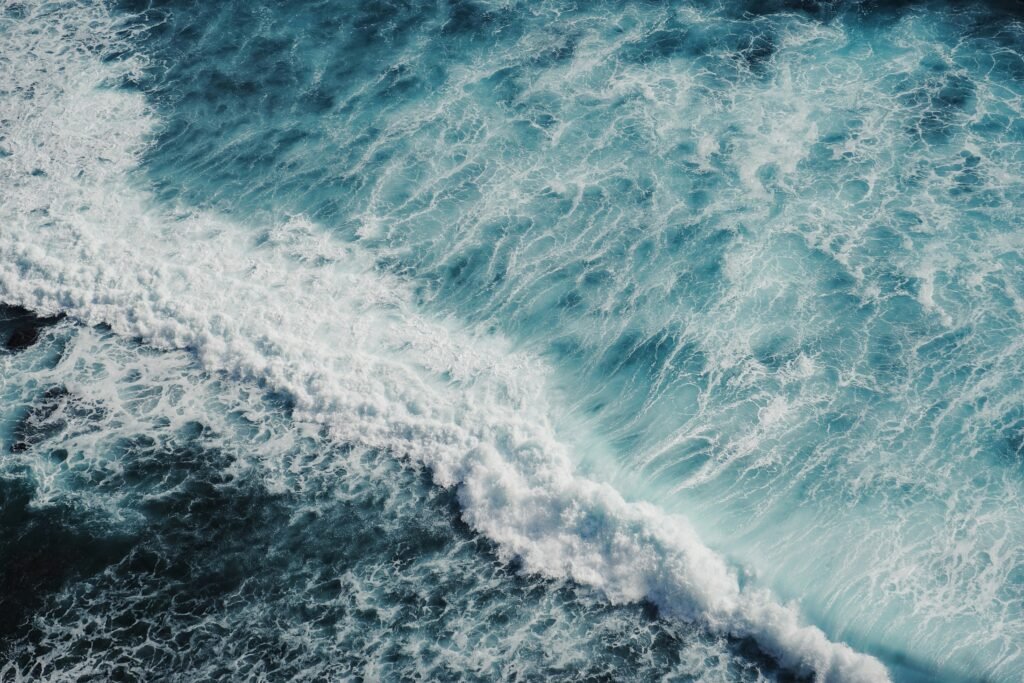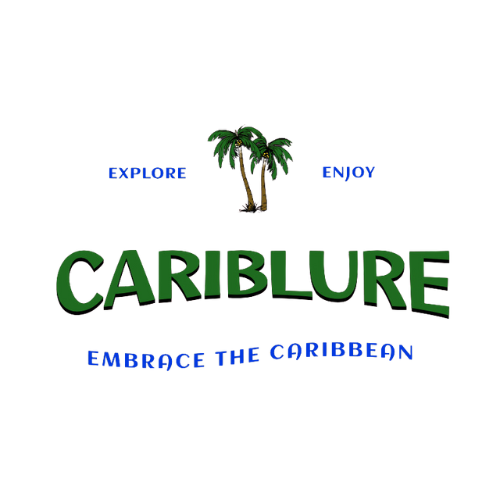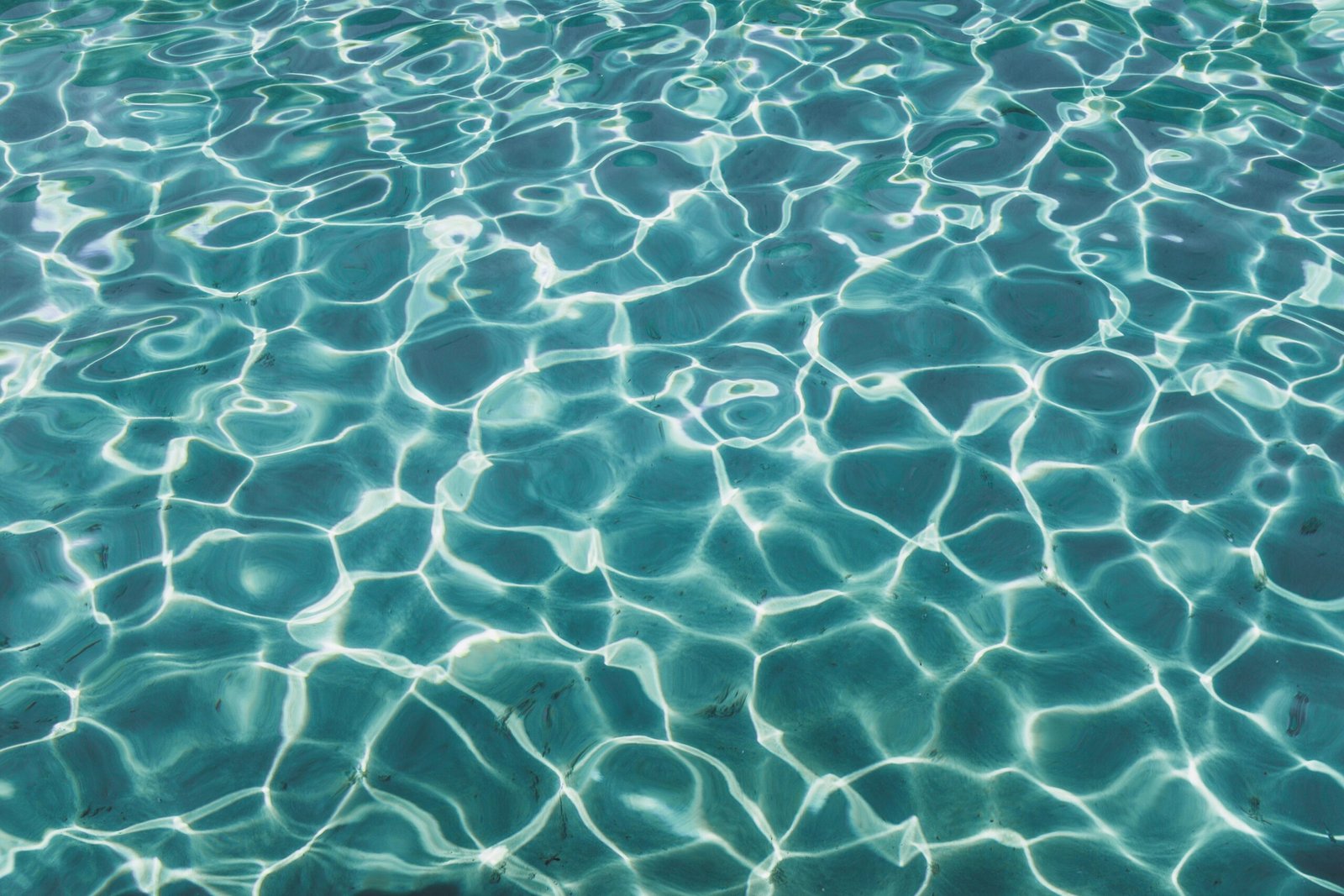Are you ready for an adventure like no other? Get ready to dive into the crystal-clear waters of the Caribbean and explore its breathtaking underwater world. From vibrant coral reefs to tropical fish of every color, the Caribbean is a paradise for both seasoned divers and beginners alike. Whether you choose to snorkel along the surface or take a scuba diving expedition to the depths below, the Caribbean offers endless opportunities to discover the beauty and wonders of its underwater universe. Get your snorkels and fins ready, because this article will guide you through the best ways to explore the Caribbean’s magnificent underwater world.
Snorkeling
The Basics
Snorkeling is a popular water activity that allows you to observe the amazing underwater world without the need for complicated equipment or special certifications. All you need is a snorkel mask, a snorkel tube, and fins. The snorkel mask allows you to see clearly underwater, while the snorkel tube enables you to breathe without lifting your head out of the water. Fins help you swim efficiently and comfortably. Snorkeling is easy to learn and suitable for people of all ages and fitness levels.
Popular Snorkeling Spots
The Caribbean boasts some of the world’s most stunning snorkeling spots. One popular spot is the Great Blue Hole in Belize. This underwater sinkhole features crystal-clear waters and an incredible variety of marine life. The Turks and Caicos Islands are another great destination, with their vibrant coral reefs and colorful fish species. If you’re looking for a unique experience, head to the Underwater Sculpture Park in Grenada, where you can snorkel amongst breathtaking sculptures that have been placed on the sea floor.
Tips for Snorkeling
To make the most of your snorkeling experience, keep a few tips in mind. First and foremost, remember to apply sunscreen to protect your skin from the sun’s rays. It’s also a good idea to wear a rash guard or a wetsuit for added sun and rash protection. When entering the water, take it slow and adjust your mask and snorkel to ensure a comfortable fit. While snorkeling, breathe slowly and calmly through your snorkel while keeping your face submerged. Finally, be mindful of the marine life and avoid touching or disturbing any coral or animals you encounter.
Snorkeling Gear
Having the right gear is essential for an enjoyable snorkeling experience. Invest in a high-quality mask that provides a clear and wide field of vision. Look for a mask with a soft, comfortable silicone skirt that creates a seal against your face. A good snorkel should have a purge valve to clear any water that enters, as well as a splash guard to prevent water from entering the tube. Fins come in different styles, so choose ones that fit properly and are comfortable to wear. Consider renting gear if you don’t snorkel regularly, but if you do, it’s worth investing in your own gear for a better fit and hygiene.
Scuba Diving
Getting Certified
Scuba diving offers a unique opportunity to explore the depths of the Caribbean’s underwater world. Before diving, however, it’s essential to become a certified diver. The certification process typically involves a combination of theory classes, confined water dives, and open water dives. Various scuba diving organizations offer certification courses, such as PADI (Professional Association of Diving Instructors) and SSI (Scuba Schools International). These courses teach you the necessary skills and knowledge to dive safely and enjoyably.
Best Dive Sites
The Caribbean is known for its incredible dive sites, each offering its own unique beauty and marine life. The Blue Hole in Belize is a world-famous dive site, featuring a deep, underwater sinkhole surrounded by vibrant coral walls and diverse marine species. The Cayman Islands are home to the legendary Bloody Bay Wall, a stunning vertical coral drop-off that attracts divers from around the globe. Another must-visit dive site is the SS Thistlegorm wreck in the Red Sea, where you can explore the remains of a World War II cargo ship.
Dive Operators
Choosing a reputable dive operator is crucial for a safe and memorable diving experience. Look for operators that prioritize safety, have experienced instructors, and maintain well-maintained equipment. Read reviews and ask for recommendations from fellow divers or your hotel/resort. Many dive operators offer guided dives for certified divers, as well as beginner courses for those looking to get certified. Remember to check the operator’s certifications and ensure they meet recognized industry standards.
Safety Precautions
While scuba diving is a thrilling activity, it’s essential to prioritize safety at all times. Before each dive, perform a thorough equipment check to ensure everything is functioning properly. Always dive within your limits and experience level, and never push yourself beyond what you’re comfortable with. Practice proper buoyancy control to avoid damaging delicate coral and marine life. Finally, always dive with a buddy and maintain good communication underwater to quickly address any potential issues or emergencies.

Underwater Photography
Choosing the Right Gear
Underwater photography allows you to capture the beauty of the Caribbean’s underwater world and create lasting memories. To get started, you’ll need a camera that is specifically designed for underwater use. Consider factors such as image quality, durability, and ease of use when selecting a camera. Additionally, invest in a sturdy underwater housing that fits your camera model to protect it from water damage. You may also want to consider purchasing additional accessories like external strobes or lenses to enhance your photography.
Composition Tips
Composition is key when it comes to creating impactful underwater photographs. Start by finding a focal point or subject for your image, such as a vibrant coral formation or an interesting marine creature. Use the rule of thirds to create a balanced composition, placing your subject off-center for a more visually appealing image. Experiment with different angles and perspectives to add depth and interest to your photos. Don’t forget to be patient and wait for the perfect moment to capture a unique and captivating shot.
Editing Techniques
Post-processing your underwater photos can take them from good to stunning. Start by organizing your photos and selecting the best ones to edit. Adjust the exposure, contrast, and white balance to accurately represent the colors and lighting conditions underwater. Enhance the vibrancy of the colors and bring out details using selective adjustments or filters. Be careful not to overdo the editing and maintain a natural look. Experiment with different editing techniques to develop your unique style and showcase the beauty of the underwater world.
Best Subjects to Capture
The Caribbean’s underwater world offers endless possibilities for capturing stunning photographs. Beautiful coral reefs teeming with vibrant fish are a common subject. Look for distinctive species, such as clownfish or angelfish, to add interest to your images. Another exciting subject is the wide variety of macro life. From tiny seahorses to colorful nudibranchs, macro photography allows you to capture the intricate details and fascinating shapes of smaller marine creatures. Don’t forget to keep an eye out for larger marine animals like turtles, rays, or even sharks, as encountering them can result in breathtaking photographs.
Submarine Tours
Exploring the Deep
Submarine tours provide a unique way to explore the depths of the Caribbean’s underwater world without getting wet. These tours typically involve descending in a comfortable, air-conditioned submarine that allows you to view the marine life and underwater landscapes through large windows. Submarine tours offer a different perspective, allowing you to witness the beauty of the underwater world from a safe and dry environment. It’s a great option for those who prefer a more relaxed and serene experience.
Popular Submarine Tour Locations
Several Caribbean destinations offer submarine tours, each with its own unique features. The Atlantis Submarine in Barbados takes you on a journey to explore coral reefs and shipwrecks, while the Seaworld Explorer in the Cayman Islands provides a semi-submarine experience, allowing you to sit in an underwater observatory while the vessel floats above. The Bahamas also offers submarine tours, allowing you to discover vibrant marine life and stunning underwater seascapes without getting wet.
What to Expect
During a submarine tour, you can expect to see a variety of marine life, vibrant coral reefs, and even shipwrecks. Knowledgeable guides provide educational commentary, sharing interesting facts about the underwater ecosystems and the marine creatures you encounter. The submarines are equipped with powerful lights to enhance visibility, ensuring you won’t miss any of the fascinating details. The tours typically last between one to two hours, giving you ample time to enjoy the underwater sights and capture stunning photographs.
Choosing a Submarine Tour
When choosing a submarine tour, consider the location, the price, and the duration of the tour. Look for reputable tour operators that prioritize safety and have experienced guides. Read reviews from previous participants to get a sense of the overall experience and the quality of the tour. Additionally, check if there are any specific requirements, such as age restrictions or health considerations, that may affect your eligibility to join the tour.

Sea Kayaking
Equipment and Safety
Sea kayaking is a fantastic way to explore the Caribbean’s stunning coastline and discover hidden coves and secluded beaches. When embarking on a sea kayaking adventure, it’s crucial to have the right equipment and prioritize safety. Invest in a sturdy sea kayak that is suitable for the conditions you’ll be paddling in. Ensure you have a properly fitting personal flotation device (PFD) or lifejacket, as well as a paddle that suits your height and paddling style. Familiarize yourself with basic paddling techniques and be aware of your limits and the currents or tides in your chosen area.
Top Kayaking Routes
The Caribbean offers a diverse range of kayaking routes, each offering its own unique scenery and experiences. The Exuma Cays in the Bahamas are a popular choice, with their crystal-clear waters and abundant marine life. The Grenadines also offer stunning kayaking opportunities, allowing you to paddle amongst beautiful islands and explore hidden bays. For a more adventurous experience, the Puerto Rico Bioluminescent Bay provides a magical kayaking experience as you witness the water glowing with bioluminescent organisms.
Guided vs. Solo
When deciding between a guided kayaking tour or going solo, consider your level of experience, knowledge of the area, and comfort with navigating on your own. Guided tours are a great option for beginners or those unfamiliar with the region, as experienced guides can provide valuable insights and ensure your safety. Solo kayaking allows for more flexibility and a sense of adventure, but it’s essential to thoroughly research the area, plan your route, and be prepared for any unexpected challenges.
Kayaking Tips
To have an enjoyable kayaking experience, keep a few tips in mind. First, always check the weather and sea conditions before setting out, as strong winds or rough waters can significantly impact your safety and paddling experience. Practice your paddling techniques and ensure you have a comfortable and efficient stroke to avoid unnecessary fatigue. Stay hydrated during your trip and take breaks when needed. Finally, respect the natural environment, avoid disturbing wildlife, and follow Leave No Trace principles by packing out all your trash.
Snuba Diving
How Snuba Works
Snuba diving combines the simplicity of snorkeling with the depth of scuba diving. It allows you to explore the underwater world while being connected to a surface air supply via a long hose. The air supply floats on a raft at the water’s surface, allowing you to swim freely underwater without the need to carry heavy tanks on your back. Snuba diving provides a greater range and depth compared to snorkeling, making it an ideal option for those who want to venture deeper without the extensive training needed for scuba diving.
Snuba vs. Scuba
Snuba diving and scuba diving are similar in that they both allow you to explore the underwater world. However, there are some key differences to consider. Snuba diving does not require any certifications, as opposed to scuba diving, which requires proper training and certification. Snuba also eliminates the need to carry heavy scuba tanks, allowing for a more comfortable and relaxed diving experience. On the other hand, scuba diving provides greater flexibility and independence, as you have your own air supply and can explore further and for longer durations.
Snuba Operators
Before attempting snuba diving, it’s essential to choose a reputable snuba operator. Look for operators that have experienced guides who are knowledgeable about the local marine life and habitats. Ensure the operator follows safety protocols and maintains their equipment regularly. Reading reviews and asking for recommendations from fellow travelers or your hotel/resort staff can help you make an informed decision. Some popular snuba destinations include Mexico’s Riviera Maya, the Cayman Islands, and the Hawaiian Islands.
Snuba Destinations
Snuba diving opens up a whole new world of underwater exploration. The Caribbean offers a multitude of destinations where you can try this unique activity. One popular destination is Cozumel, Mexico, with its warm, clear waters and stunning coral reefs. The Cayman Islands are another great choice, known for their vibrant marine life and accessible dive sites. If you’re headed to the US Virgin Islands, St. Thomas offers incredible snuba diving opportunities, allowing you to swim alongside tropical fish and explore colorful coral formations.

Helmet Diving
Underwater Walking Experience
Helmet diving provides a truly unique underwater experience where you can walk on the ocean floor while still breathing normally. This activity involves wearing a special helmet that allows you to breathe through an air hose connected to the surface. You descend a ladder into the water while wearing the helmet, and once submerged, you can explore the underwater world with ease. Helmet diving is a great option for those who are not comfortable swimming or have physical limitations, as it does not require any swimming skills.
Popular Helmet Diving Spots
Several Caribbean destinations offer helmet diving experiences, each with its own attractions. The Bahamas’ Nassau is a popular spot, allowing you to walk on the sandy ocean floor and interact with friendly marine life such as stingrays. Sint Maarten also offers helmet diving, where you can enjoy an up-close encounter with tropical fish and explore a vibrant coral reef. The Dominican Republic’s Punta Cana is another fantastic option, offering breathtaking views of colorful coral formations and an array of marine species.
Safety Measures
Safety is of utmost importance during helmet diving. Before participating, you’ll receive instructions on how to use the helmet and communicate with the surface crew. Ensure that the helmet’s seal is secure and properly fitted to your head to prevent water from entering. Listen carefully to the instructions provided by the dive operators and follow them closely. Never attempt any activities that go against the guidelines or put you or the marine life in danger. Always dive with professional dive operators who prioritize safety and have a good track record.
Finding Helmet Diving Tours
To find helmet diving tours in the Caribbean, start by researching popular destinations that offer this activity. Check online travel forums and read reviews from previous participants to get a sense of the quality of the experience and the credibility of the tour operators. Visit the official websites of the destinations or contact local tourism offices for information on authorized operators. Booking through reputable travel agencies or directly with the operators themselves can also ensure a safe and enjoyable helmet diving experience.
Underwater Wildlife Encounters
Swimming with Dolphins
Swimming with dolphins is a dream for many people, and the Caribbean offers opportunities to make that dream a reality. Several destinations, such as the Dominican Republic, Jamaica, and the Bahamas, have dolphinariums or marine parks where you can take part in interactive dolphin encounters. Under the guidance of trained professionals, you’ll have the chance to swim alongside these intelligent creatures, watch them perform tricks, and even have playful interactions. Remember to choose facilities that prioritize the well-being of the dolphins and support ethical practices.
Manta Ray Snorkeling
Snorkeling with majestic manta rays is an awe-inspiring experience that allows you to witness these gentle giants in their natural habitat. Destinations like the Cayman Islands, Hawaii, and the Maldives offer manta ray snorkeling experiences. Experienced guides will take you to known manta ray feeding grounds, where you can watch these graceful creatures glide through the water, filter-feeding on plankton. Remember to maintain a respectful distance and not touch or disturb the mantas, as it is important to protect their natural behavior and environment.
Turtle Watching
The Caribbean is home to several species of sea turtles, and observing these ancient creatures in their natural environment is a truly memorable experience. Locations such as the Riviera Maya in Mexico, the US Virgin Islands, and Barbados offer fantastic opportunities for turtle watching. Whether by snorkeling or diving, you can witness turtles gracefully swimming, feeding, and resting on the colorful coral reefs. Remember to respect their space, avoid touching or interfering with their behavior, and maintain a safe distance to avoid stress and harm to the turtles.
Shark Encounters
For the adventurous at heart, shark encounters in the Caribbean offer a thrilling and educational experience. Destinations like the Bahamas and Roatan in Honduras are renowned for their shark diving experiences. Guided tours allow you to dive or snorkel alongside different shark species, such as nurse sharks, reef sharks, or even the mighty tiger sharks. Professional guides ensure safety and provide educational information about these fascinating creatures. These encounters provide an opportunity to dispel common misconceptions about sharks and promote their conservation.
Cave Diving
Exploring Underground Caves
Cave diving takes exploration to a whole new level as you venture into the mysterious world of underwater caves. These hidden caves offer stunning geological formations and unique ecosystems. The Yucatan Peninsula in Mexico is famous for its extensive underground river systems, known as cenotes, which are a popular destination for cave diving. The Dominican Republic’s Dominican Republic’s Padre Nuestro Cave System and the Little River Blue Hole in Belize are also renowned cave diving spots. Cave diving should only be attempted by experienced and certified divers due to its inherent risks.
Equipment and Training
Cave diving requires specialized training and equipment due to the challenging and potentially hazardous nature of the environment. Proper cave diving training focuses on navigation, buoyancy control, and emergency procedures specific to cave diving. It’s crucial to have a thorough understanding of equipment such as reels, lines, and cave diving lights. Divers must also be comfortable with extended periods of underwater exploration and have a high level of self-discipline. Always dive with an experienced cave diving guide to ensure safety and avoid the risk of getting lost or disoriented in the caves.
Cave Diving Safety
Safety is paramount when it comes to cave diving. Before attempting cave diving, ensure you have the required level of training and experience. Always dive within your limits and adhere to safe cave diving practices. Maintain frequent communication and a clear line of sight with your diving partner to ensure constant contact and assistance if needed. Carry redundant equipment, such as multiple lights and air supplies, to handle potential emergencies. Respect local regulations and cave diving guidelines, and never enter a cave without proper authorization.
Famous Cave Diving Sites
The Caribbean offers several famous cave diving sites that attract experienced divers from around the world. The Cenotes of the Yucatan Peninsula in Mexico are a top destination, with their intricate cave systems, crystal-clear water, and stunning underwater formations. The Dominican Republic’s Padre Nuestro Cave System is another renowned site, boasting submerged galleries and breathtaking chambers. In the Bahamas, the incredible Blue Holes offer unique exploratory opportunities for cave divers, with their entrances leading to intricate cave systems and underwater labyrinths.
Water Sport Adventures
Jet Skiing
Jet skiing is a thrilling water sport that allows you to zoom across the Caribbean’s turquoise waters and explore the coastline in a fast and exciting way. Many Caribbean destinations offer jet ski rentals, allowing you to ride along the coastline and visit hidden beaches or secluded coves. Always ensure you have a proper understanding of jet ski operation, including the throttle, brakes, and safety features. Maintain a safe distance from other watercraft, follow any designated speed limits, and respect any local regulations or restrictions.
Parasailing
Parasailing provides a unique perspective of the Caribbean’s stunning landscapes as you soar above the water, suspended from a parachute. This exhilarating experience allows you to enjoy breathtaking views of the coastline, coral reefs, and turquoise waters below. Parasailing is typically done in tandem, with one or two people harnessed to the parachute. Follow the instructions of the experienced crew and enjoy the ride as you gently ascend into the sky. Paradise-like destinations such as the Bahamas, Aruba, and Jamaica offer fantastic parasailing opportunities.
Tubing and Wakeboarding
For those seeking high-speed thrills, tubing and wakeboarding are popular water sports that offer adrenaline-pumping action. In tubing, you are towed behind a speedboat on an inflatable tube, bouncing and gliding over the water’s surface. Wakeboarding, on the other hand, combines elements of surfing, water skiing, and snowboarding as you ride a board attached to a speedboat’s wake. Many Caribbean destinations, such as the US Virgin Islands and Puerto Rico, offer opportunities to experience these exciting water sports. Always wear a life jacket and follow the instructions of the experienced operators to ensure a safe and fun experience.
Flyboarding
Flyboarding is an extreme water sport that allows you to fly above the water’s surface thanks to a water-propelled jetpack attached to your feet. This thrilling activity combines elements of water jet skiing and acrobatics as you soar through the air or dive underwater like a dolphin. Destinations like the Dominican Republic, Aruba, and Jamaica offer flyboarding experiences for adventure-seeking individuals. It’s important to receive proper training and wear the necessary safety equipment, including a helmet and a life jacket, to ensure a safe and enjoyable flyboarding adventure.
In conclusion, exploring the Caribbean’s underwater world offers a multitude of unforgettable experiences. Whether you prefer snorkeling, scuba diving, or trying unique activities like helmet diving or snuba diving, the Caribbean’s crystal-clear waters and vibrant marine life create the perfect backdrop for your aquatic adventures. Remember to prioritize safety, respect the underwater environment, and choose reputable operators to make the most of your underwater explorations. So grab your snorkel, dive in, and embark on a journey of discovery beneath the Caribbean waves.


